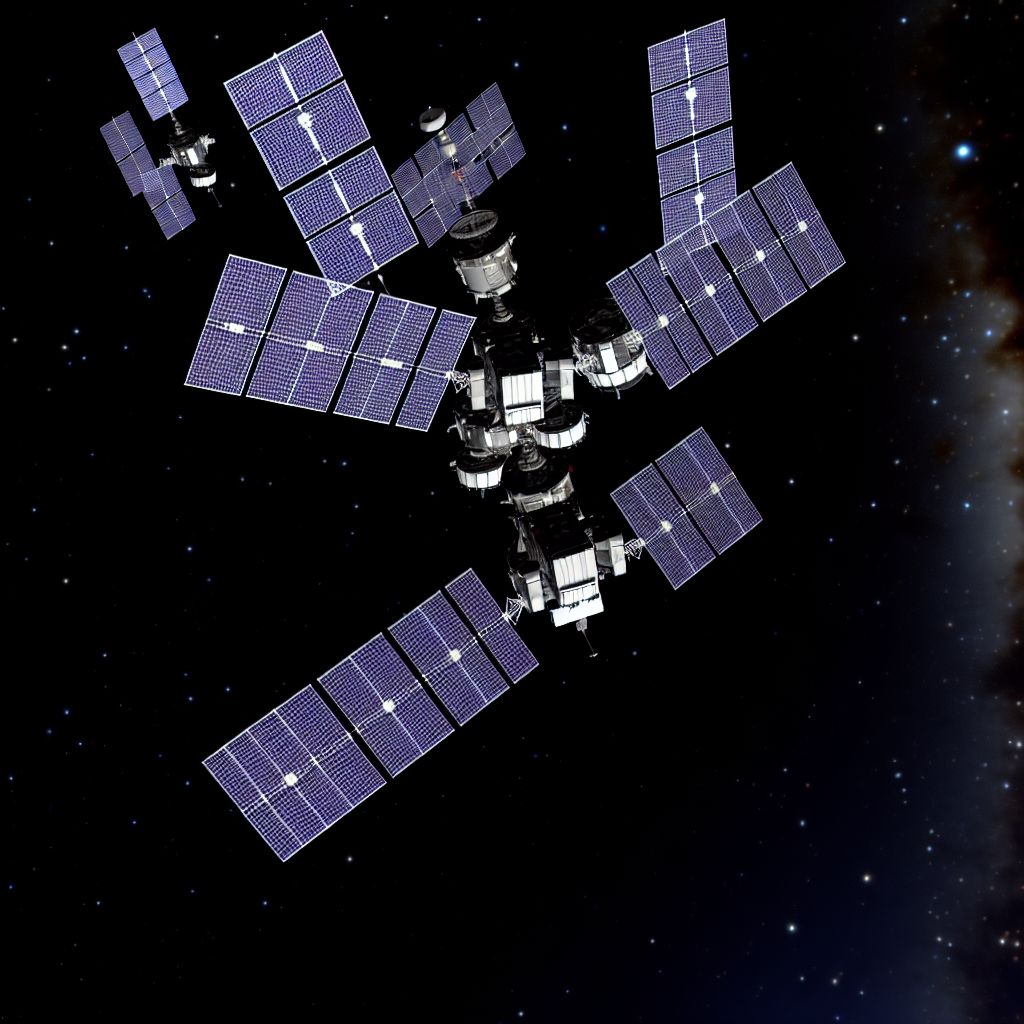Deutsch: Mehrere Satelliten / Español: Multi-satélite / Português: Multi-satélite / Français: Multi-satellite / Italiano: Multi-satellite
Multi-satellite in the Space industry context refers to systems or missions that involve the use of multiple satellites operating together to achieve a common goal or to provide a set of services. These systems can range from small groups of satellites working in tandem to large constellations consisting of hundreds or even thousands of individual satellites. Multi-satellite systems are designed to offer enhanced coverage, increased Data collection capabilities, and Redundancy over single-satellite systems, making them essential for a wide range of applications including communications, Earth observation, scientific research, and navigation.
Description

The deployment of multi-satellite systems allows for more comprehensive global or regional coverage, higher resolution and faster data Acquisition, and improved reliability and resilience of space-based services. These systems can be configured in various orbital planes and altitudes, depending on their intended application, to optimize coverage and functionality. The coordination and communication among satellites in such systems are Critical for their successful operation.
Application Areas
- Communication Networks: Providing global Broadband internet coverage, Mobile communication, and data services. Examples include the Starlink (by SpaceX) and OneWeb satellite constellations.
- Earth Observation: Offering detailed and frequent Monitoring of the Earth’s surface for environmental monitoring, weather forecasting, Disaster response, and agriculture. Systems like the Copernicus Sentinel satellites operated by the European Space Agency (ESA) are examples.
- Navigation and Positioning: Enhancing global navigation systems, such as the Global Positioning System (GPS), GLONASS, Galileo, and BeiDou, which rely on multi-satellite configurations to provide accurate location information worldwide.
- Scientific Research: Conducting space Science and astrophysical research through coordinated satellite missions, such as the Hubble Space Telescope and the soon-to-be James Webb Space Telescope, although these are not multi-satellite systems, collaborative efforts like the ESA's Swarm mission, which studies Earth's magnetic field using multiple satellites, illustrate the concept in scientific research.
Well-Known Examples
- Starlink: A satellite internet constellation being deployed by SpaceX to provide high-speed internet across the globe.
- Global Positioning System (GPS): A network of satellites providing navigation and positioning services worldwide.
Treatment and Risks
Deploying and operating multi-satellite systems involves several challenges:
- Orbital Congestion and Space Debris: The increasing number of satellites raises concerns about space traffic management and the potential for collisions, contributing to space debris.
- Inter-satellite Coordination: Ensuring efficient communication and data transfer between satellites, as well as accurate position control.
- Regulatory and Frequency Management: Navigating the complex regulatory Environment for satellite operations, including securing frequency allocations to prevent interference.
Similar Terms or Synonyms
Summary
Multi-satellite systems represent a significant Advancement in space Technology, enabling enhanced capabilities across a variety of applications from global communication networks to comprehensive Earth monitoring. Despite the challenges associated with orbital congestion and coordination, the benefits of increased coverage, redundancy, and data collection capabilities continue to drive the expansion of multi-satellite systems in the space industry.
--
Related Articles to the term 'Multi-satellite' | |
| 'TDRSS' | ■■■■■■■■■ |
| TDRSS stands for the Tracking and Data Relay Satellite System. TDRSS is a system of communication satellites . . . Read More | |
| 'Light Detection' | ■■■■■■■■■ |
| Light Detection: Light detection in the Space industry refers to the use of sensors and technologies . . . Read More | |
| 'LEO' | ■■■■■■■■ |
| LEO stands for Low Earth Orbit. Low Earth Orbit refers to an altitude range of around 100-2000 kilometers . . . Read More | |
| 'Microsat' | ■■■■■■■■ |
| Microsat in the Space industry context refers to a type of satellite with a Mass typically ranging from . . . Read More | |
| 'Satellites and Spacecraft' | ■■■■■■■■ |
| Satellites and Spacecraft: Satellites and spacecraft are essential technologies in the Space industry, . . . Read More | |
| 'SatCom' | ■■■■■■■■ |
| Satellite communications (SatCom) refers to the use of artificial satellites to transmit and receive . . . Read More | |
| 'Arianespace' | ■■■■■■■■ |
| Arianespace is a prominent company in the Space industry known for its satellite launch services. Established . . . Read More | |
| 'Interconnection' | ■■■■■■■ |
| Interconnection in the Space industry context refers to the linking of spacecraft systems, satellites, . . . Read More | |
| 'Space Exploration' | ■■■■■■■ |
| Space Exploration refers to the investigation and study of outer space through the use of astronomy, . . . Read More | |
| 'Array' | ■■■■■■■ |
| An array refers to a group or system of interconnected components, often arranged in a pattern, used . . . Read More | |
